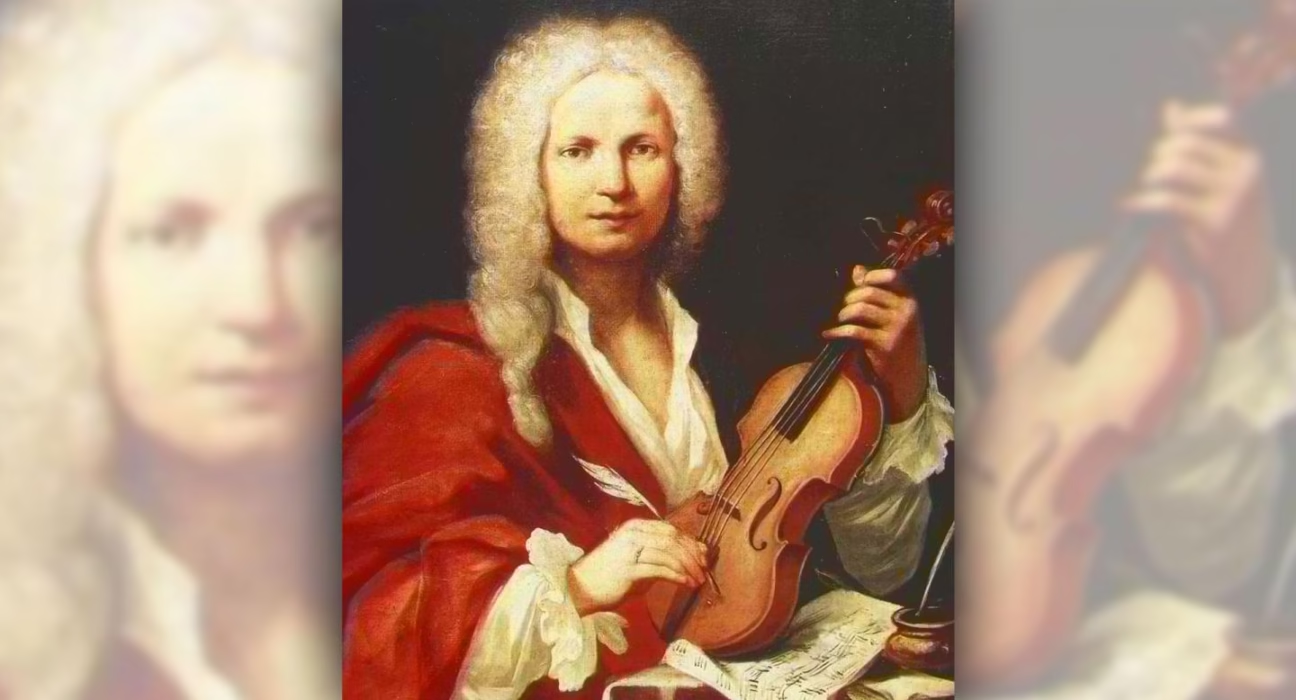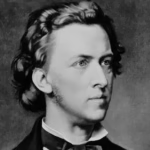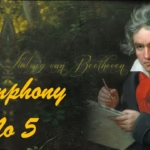Antonio Vivaldi was an Italian composer born in Venice on March 4, 1678. He is revered as one of the most celebrated figures of the Baroque era. His innovative approach to composition, along with a distinctive style that blends lyrical melodies with intricate harmonies, has left an indelible mark on generations of musicians and composers. This article explores Vivaldi’s life, work, and enduring influence, examining how his artistry transcended time and continues to inspire modern music.
The Artistry Behind Vivaldi’s Compositions
Vivaldi’s genius lies not only in his prolific output but also in his ability to evoke emotions through music. His compositions are a masterclass in storytelling, often showcasing the interplay between nature and human emotion.
The Four Seasons, perhaps his most renowned work, exemplifies this narrative quality. Each concerto stands as a testament to Vivaldi’s talent for painting vivid imagery through sound, allowing listeners to experience the seasons in unique and profound ways.
The Four Seasons: Nature as a Muse
Vivaldi’s The Four Seasons is a set of four violin concertos, each representing a different season: spring, summer, autumn, and winter.
Each piece is accompanied by a sonnet, presumably penned by Vivaldi himself, which further enhances the sensory experience. These poems describe the sights and sounds associated with each season, acting as a guide for listeners to navigate the musical landscape.
Spring: A Celebration of Renewal
The Spring concerto bursts forth with joyful motifs that mirror the awakening flora. The lively rhythms and bright melodies capture the essence of blossoming flowers and the joyous arrival of warmer weather.
Listeners can almost hear the chirping of birds and feel the gentle breeze through Vivaldi’s deft use of instrumentation. The allegro movement, in particular, evokes a sense of joyful anticipation, reminiscent of children playing in meadows bathed in sunlight. The music also features a passage that mimics the sound of a murmuring brook, adding to the sense of serenity. However, towards the end of the movement, sudden tremolos suggest a distant thunderstorm, introducing a touch of nature’s unpredictability.
Summer: A Stormy Interlude
In stark contrast, the Summer concerto portrays the intensity of heat and impending storms. The first movement begins with a languid, oppressive atmosphere, evoking the stillness of a scorching summer afternoon. The constant, repetitive notes in the violins mimic the incessant buzzing of cicadas, reinforcing the feeling of sweltering heat.
The second movement, Adagio, depicts a shepherd sleeping under the sun while insects hum in the background. Yet, there is an underlying sense of unease, as if nature is warning of an approaching storm. This tension is unleashed in the final movement, where rapid scales and dramatic dynamic shifts capture the fury of a summer tempest, complete with howling winds, crashing thunder, and relentless rain.
Vivaldi masterfully captures the dichotomy of summer—its beauty alongside its potential ferocity—allowing listeners to experience both the tranquility and the chaos of the season.
Autumn: A Harvest Celebration
The Autumn concerto celebrates the harvest season, filled with themes of abundance and merriment. The lively first movement conveys the joy of dancing and feasting, as farmers revel in the fruits of their labor. The music even humorously depicts drunken revelers stumbling about, with uneven rhythms reflecting their tipsy state.
The second movement, Adagio molto, introduces a tranquil moment of rest, as the exhausted revelers fall into a deep sleep. The soft, delicate strings create an almost dreamlike atmosphere, contrasting with the exuberance of the opening.
The final movement brings an unexpected shift in tone as it portrays a hunting scene. The music vividly captures the excitement of riders on horseback, the chase through the forest, and the eventual capture of the prey. This movement showcases Vivaldi’s ability to paint aural pictures, making the listener feel as if they are part of the hunt.
Winter: A Chilling Embrace
Finally, the Winter concerto envelops listeners in a chilling atmosphere, reminiscent of snowflakes gently falling. The opening movement paints a picture of biting cold, with sharp, staccato notes mimicking the sensation of shivering. The music conveys the struggle of walking on ice, slipping and stumbling as the melody moves unpredictably.
The second movement, Largo, shifts indoors to a scene of warmth and comfort. The gentle, flowing melody suggests a person sitting by a crackling fireplace while the cold remains ever-present outside. The contrast between warmth and frost adds emotional depth to the piece.
The final movement returns to the harshness of winter, portraying the howling wind and icy storms. The music moves at a relentless pace, capturing the exhilarating yet unforgiving nature of the season. Through dramatic dynamic changes and rapid bowing techniques, Vivaldi brings to life the full force of winter’s power, leaving listeners in awe of nature’s might.
Vivaldi’s Life: Triumphs and Tribulations

While Vivaldi achieved great success during his lifetime, his journey was not without challenges. Understanding the complexities of his life provides valuable context to his artistic output and the evolution of his music.
Born into a world of political upheaval and cultural shifts, Vivaldi navigated a landscape that both shaped his creativity and posed obstacles to his career.
Early Years and Musical Beginnings
Vivaldi was born to a family steeped in music; his father was a violinist who likely influenced his early education. After becoming a priest in 1703, Vivaldi took a position as a violin teacher at the Ospedale della Pietà, an institution for orphaned and abandoned girls. This institution became a vital part of Vivaldi’s artistic development. It provided him with access to talented musicians, enabling him to compose and perform his works regularly.
At the Ospedale, Vivaldi wrote many of his famous compositions, including a substantial number of concertos and sacred music. His association with this institution allowed him to gain a reputation as a virtuoso violinist and innovative composer.
The performances held at the Ospedale, featuring the most gifted students, attracted considerable attention from Venetian society and visiting dignitaries from across Europe, further cementing Vivaldi’s prominence in Venice’s vibrant musical scene. His work there laid the foundation for what would become a significant career.
Challenges and Decline
Despite his successes, the changing tastes of the musical world created challenges for Vivaldi. As musical tastes evolved in the mid-18th century, audiences began favoring different styles, particularly the more elegant and structured compositions of composers from Germany and France.
As a result, Vivaldi’s energetic and innovative approach fell out of favor, leading to a decline in his popularity. This shift raises important questions about the nature of artistic relevance and cultural appreciation, highlighting the often-fickle tides of public taste.
As his popularity waned, Vivaldi left Venice for Vienna in hopes of securing royal patronage. However, the unexpected death of Emperor Charles VI left him without support, and he spent his final days in financial hardship.
Yet, even during this challenging period, Vivaldi remained dedicated to his craft, continuing to compose works that showcased his innovative spirit. His resilience in the face of adversity speaks volumes about the complexity of the creative life.
Rediscovery and Renaissance
While Vivaldi’s influence persisted through composers like J.S. Bach, his music remained largely overlooked until the 20th century, as musicians and scholars sought to revive his music and recognize his contributions to the classical canon. Their dedication to reviving Vivaldi’s legacy paved the way for a renewed interest in his music.
Recordings, performances, and scholarly research contributed to a resurgence of Vivaldi’s music in contemporary culture, making it accessible to new audiences. Notably, recordings by ensembles like I Musici and virtuoso violinists such as Nigel Kennedy played a key role in this revival. This revival reflects a fascinating dynamic within the arts, illustrating how historical figures can be reinterpreted and appreciated anew by successive generations.
Nowaday, the rise of platforms like Spotify and Apple Music has played a crucial role in popularizing Vivaldi’s compositions, allowing listeners worldwide to explore his repertoire. Vivaldi’s music can now reach audiences far beyond the confines of concert halls, echoing through homes and devices globally.
The Cultural Significance of Vivaldi’s Work

Vivaldi’s music reflects the artistic and cultural vitality of Baroque Venice, a city renowned for its flourishing musical institutions and dynamic theatrical traditions. His compositions, particularly his concertos, showcase the expressive and virtuosic style that defined Venetian music, blending technical brilliance with emotional depth.
Music in the Venetian Cultural Landscape
Venice in Vivaldi’s time was a major center of music, attracting composers, performers, and patrons from across Europe. The city’s public opera houses and religious institutions provided fertile ground for musical experimentation.
As a composer and violinist at the Ospedale della Pietà, Vivaldi contributed significantly to this vibrant scene, writing concertos and sacred works that were both innovative and widely admired. His compositions reflect the grandeur and theatricality characteristic of Venetian music, appealing to audiences both within and beyond the city.
Tradition and Innovation in Vivaldi’s Music
Vivaldi’s music was deeply rooted in the traditions of Venetian Baroque, yet he was also a bold innovator who expanded the expressive and technical possibilities of instrumental music. His contributions to the concerto form were particularly groundbreaking. Before Vivaldi, concertos often followed a more rigid, imitative style. He transformed them by developing the ritornello form, where a recurring orchestral theme alternates with solo passages, creating dynamic contrasts and heightened drama.
One of his most famous examples is The Four Seasons, where each concerto paints a vivid musical picture of its respective season. These programmatic elements—using music to depict specific scenes or emotions—were not entirely new, but Vivaldi’s approach was more vivid and direct than many of his predecessors.
Beyond concertos, Vivaldi also experimented with vocal and sacred music, blending operatic expressiveness into his religious compositions. His Gloria in D major, RV 589 features lively rhythms and dramatic contrasts that make it feel more like an operatic celebration than a solemn church piece. This willingness to push boundaries within established forms helped shape the evolution of Baroque music and influenced later composers, including Johann Sebastian Bach, who transcribed several of Vivaldi’s concertos for keyboard.
A Legacy of Expressive Freedom
Vivaldi’s emphasis on contrast, drama, and emotional immediacy was part of a broader shift in Baroque music towards greater expressive freedom. His compositions often showcased bold harmonic progressions and unexpected modulations, keeping listeners engaged with moments of tension and resolution. This can be seen in works like his Concerto for Strings in G minor, RV 156, where the interplay between dark, restless passages and lyrical interludes creates a compelling sense of drama.
Ultimately, Vivaldi’s legacy is one of artistic boldness. His ability to balance structured tradition with emotional spontaneity made his music timeless. Today, his works remain a testament to the idea that music can be both technically sophisticated and deeply expressive, a lesson that continues to resonate with composers across genres.
Vivaldi’s Influence on Contemporary Music

Vivaldi’s impact on contemporary music is profound. His unique musical language transcends time, embodying emotional depth and technical brilliance in a way that continues to resonates with musicians and listeners today. His compositions have left a lasting influence on everything from film scores to pop arrangements.
Film scores, for instance, frequently utilize Vivaldi’s compositions to enhance emotional storytelling, demonstrating the lasting impact of his musical language. The recognizable motifs found in pieces like The Four Seasons lend themselves beautifully to cinematic narratives, enhancing the viewer’s experience. Whether portraying scenes of love, adventure, or introspection, Vivaldi’s music complements visual storytelling, underscoring the universality of human emotion.
Beyond film scores, Vivaldi’s influence extends into the realm of popular music. Various artists have adapted his compositions, infusing them with contemporary flair while remaining true to the essence of his work. These adaptations not only pay homage to Vivaldi but also introduce his music to new audiences, bridging the gap between classical and popular genres.
Conclusion

Antonio Vivaldi remains an emblematic figure in classical music, embodying the complexities of artistic life—the triumphs, struggles, and eventual recognition of one’s contributions to human experience through sound. His innovative compositions and vibrant musical style have secured his place in history as a pivotal figure in the Baroque era.
Through the lens of his life and work, we glean insights into the nature of artistic relevance, the cyclical tides of cultural appreciation, and the enduring power of music to evoke emotion and foster connection. Vivaldi’s legacy continues to inspire new generations of musicians and listeners, reminding us that true creativity knows no temporal boundaries. As we revisit and appreciate the masterpieces of our past, we honor the resilience of the creative spirit and the timeless beauty of Vivaldi’s art.








